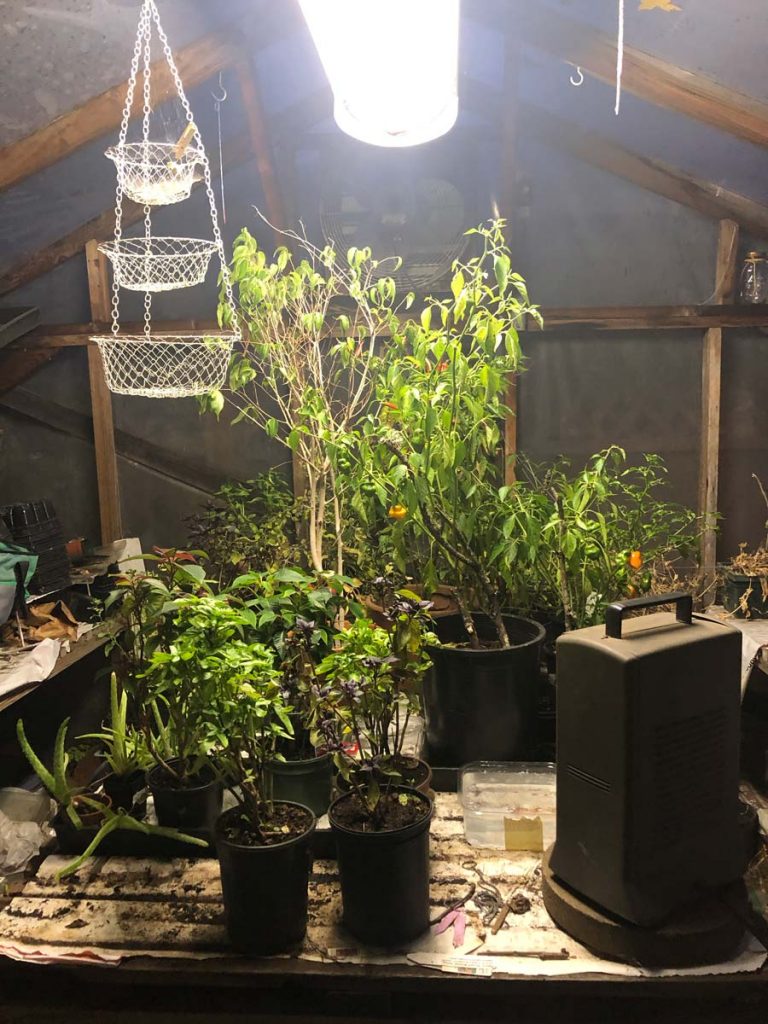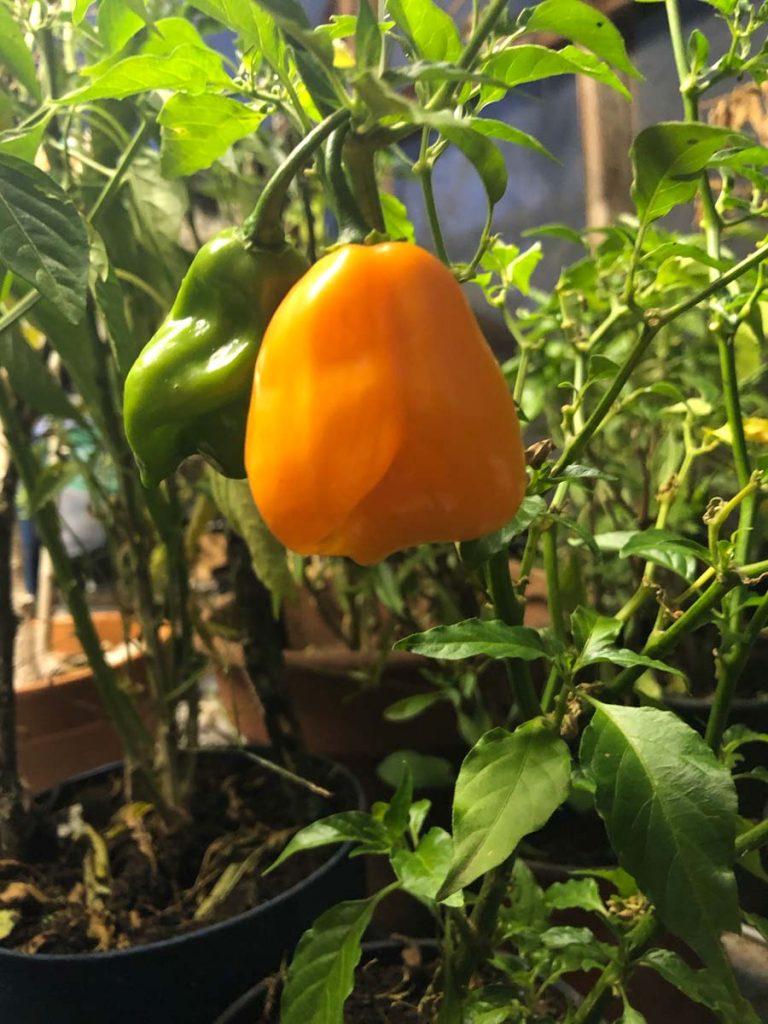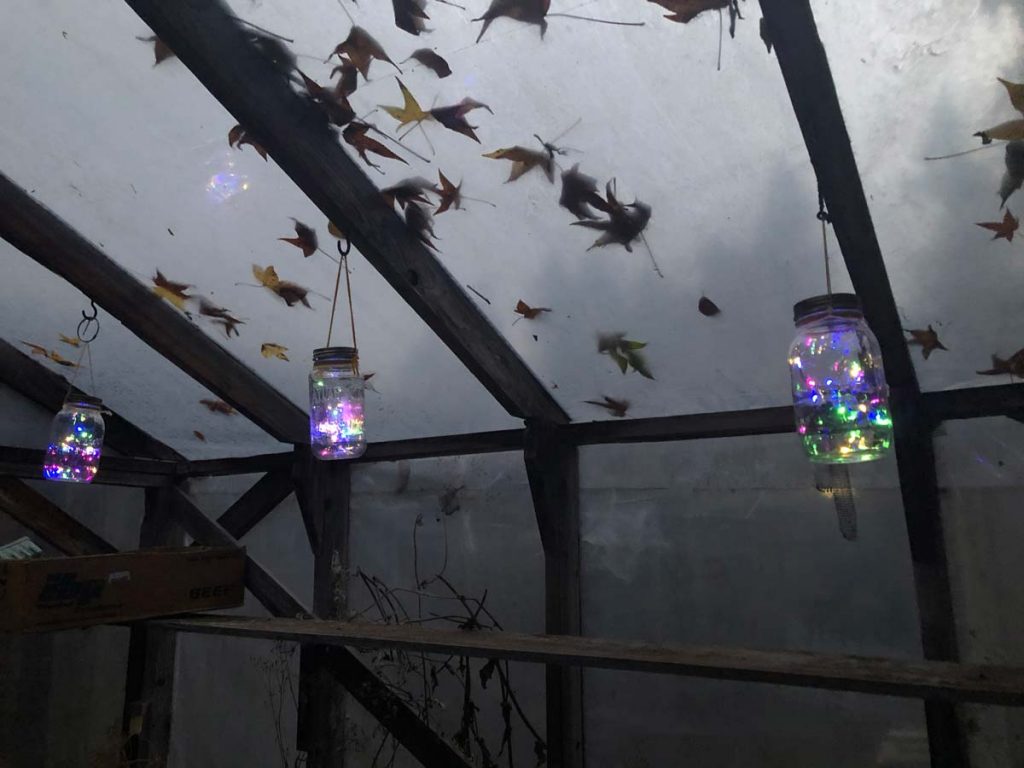Right up until a couple of weeks ago, we were still getting a beautiful harvest from the garden, when a hard freeze was forecast for the evenings. Then we knew we were either going to lose all of the hot peppers (which had not yet ripened) and the rest of the basil, which was not yet bolting. Since we were going to lose them anyway, we decided to risk digging them all up and putting them in pots in the greenhouse. As it turns out, that was a really good gamble as the plants weathered the transplanting very well!

In the greenhouse, the plants sit on the middle bench near a small heater that keeps the temperature no less than 50 degrees Fahrenheit. Within a week, the peppers all began to ripen. We did lose a couple of pepper plants to shock, but the vast majority of them survived, most fruits ripened in a week or so, and a lot of them continued to put on new flowers.

The basil began putting on new leaves within a couple of weeks as well. I love the delicious floral smell whenever I go into the greenhouse and it’s going to be really awesome having fresh basil into the winter months.

If I had to assess what it was that made this transplanting a success, I would have to say it is some combination of the following things:
- Use a high quality soil — or be sure to include a lot of peat or coconut fiber in the mix so that moisture can be retained relatively evenly.
- Keep the soil (and ultimately the roots of the transplanted plants) evenly moist for the first week or so.
- Keep the greenhouse relatively cool for the first week or so while the plants go through their shock period. (When the sun came out during the day that first week, I opened the greenhouse door to get a nice breeze through there.)
- Of course… regulate the temperature. Don’t let the temperature drop below the 40s at all! (That was the whole point of moving them, of course!) Choose a heater that will switch itself off if tipped over or if it overheats, like a milkhouse heater, so that you are relatively safe leaving it unattended. (Do not plug a heater into an extension cord, plug directly into an outlet!)
- As the plants acclimate to the pots and the greenhouse environment, be sure to continue to water them. I have been misting ours and leaving trays of water out around the pot bases (but not so the bases are in them) so that the water can evaporate into the air and keep the humidity up.
- If you’re going to try and grow fruits in your greenhouse, you may want to find a small paintbrush and take on the job of a bee, brushing each blossom carefully to spread pollen. (Many bees and other pollinators are hibernating this time of year, so you’ll have fewer buzzing around your plants.)
Next up, we’re going to try starting some lettuce and greens in the greenhouse and see how they do! So more to come…
